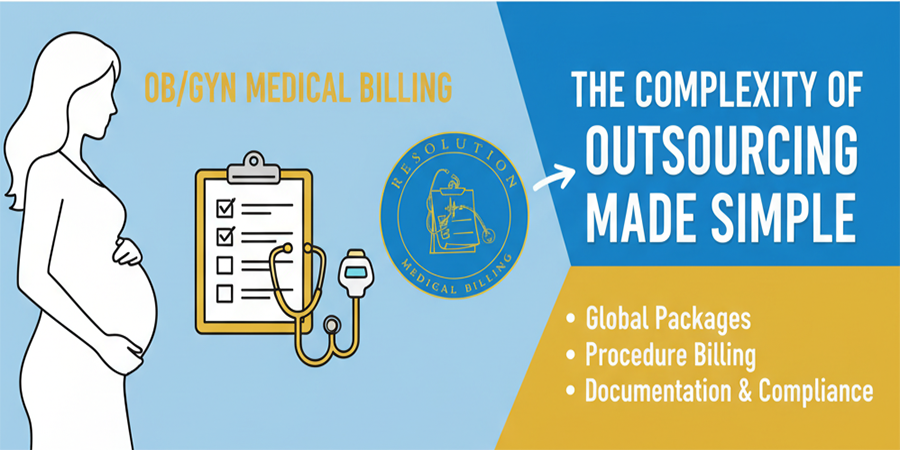OB/GYN billing is unlike billing in most other specialties. While every practice deals with coding, denials, and payer rules, OB/GYN providers face unique challenges: bundled maternity care, overlapping services, frequent prior authorizations, and strict documentation requirements. If even one detail is overlooked, practices risk delayed revenue, or worse, compliance issues.
In this blog, we’ll break down the inner workings of OB/GYN medical billing and explain why most practices are choosing to outsource.
Global Maternity Packages: One Code, Many Services
Most payers require global billing for maternity care, which means multiple services. Prenatal visits, delivery, and postpartum care are bundled under one CPT code. This reduces claim volume but introduces risk.
Challenges include:
- Timing of claims: Practices often wait months before receiving payment since services span across the entire pregnancy.
- Split billing: Some payers require itemized services (ultrasounds, labs) billed separately, while others include them in the global fee.
- Multiple births: Coding rules for twins, triplets, and high-risk pregnancies vary and can easily result in underbilling.
Why outsourcing helps: Dedicated billers know which payers include or exclude certain services, when to split claims, and how to correctly apply modifiers for multiple births. This ensures maximum reimbursement.
Procedure Billing: Beyond Global Packages
OB/GYN practices regularly perform procedures outside of routine maternity care, each with its own rules:
- Ultrasounds: Coverage depends on medical necessity and frequency. Incorrect ICD-10 coding can trigger frequent denials.
- Contraceptive procedures: Rules differ by payer; some require device billing separate from the procedure; others don’t.
- Preventative Screening: There are oftentimes limitations when it comes to age and frequency of testing. Policies are constantly evolving when it comes to screening.
Why outsourcing helps: Expert billers keep up with evolving payer policies and know when a procedure is separately billable versus bundled. This prevents revenue leakage.
Documentation & Compliance: High Risk in OB/GYN
OB/GYN services are heavily scrutinized by payers because of their complexity and high costs. Missing or vague documentation can result in claim denials or audits.
Key areas at risk:
- Postpartum visits: Practices sometimes miss billing visits outside the global period.
- High-risk pregnancy management: Additional services may be billable, but only if properly documented.
- Prior authorizations: Imaging, genetic testing, and certain procedures often require pre-approval.
Why outsourcing helps: Outsourced teams audit documentation before submission, flag missing elements, and help practices stay compliant, avoiding costly takebacks.
Key Metrics OB/GYN Practices Should Look Out For:
To stay financially healthy, OB/GYN practices should track specific revenue cycle KPI’s:
- Days in A/R: How long it takes to collect payments. (Target: <40 days)
- Denial Rate: Percentage of claims denied. (Target: <5%)
- Net Collection Rate: Percentage of collectible revenue. (Target: >95%)
- Missed Charges: Revenue lost from services not billed.
Why outsourcing helps: Experienced billing companies provide transparent reporting on these KPIs, helping practices spot issues before they affect revenue.
The Bottom Line
OB/GYN billing is more than claim submission, it’s a detailed process requiring constant attention to coding rules, payer policies, and compliance standards. From global maternity packages to procedure-specific billing and high-risk care, the revenue cycle in OB/GYN is filled with complexity.
Outsourcing ensures your practice has a team of specialists monitoring every detail. This will reduce denials, improve collections, and free providers to focus on the quality of patient care.
For OB/GYN practices, outsourcing isn’t just about convenience, it’s about protecting revenue, staying compliant, and building long-term financial stability.





